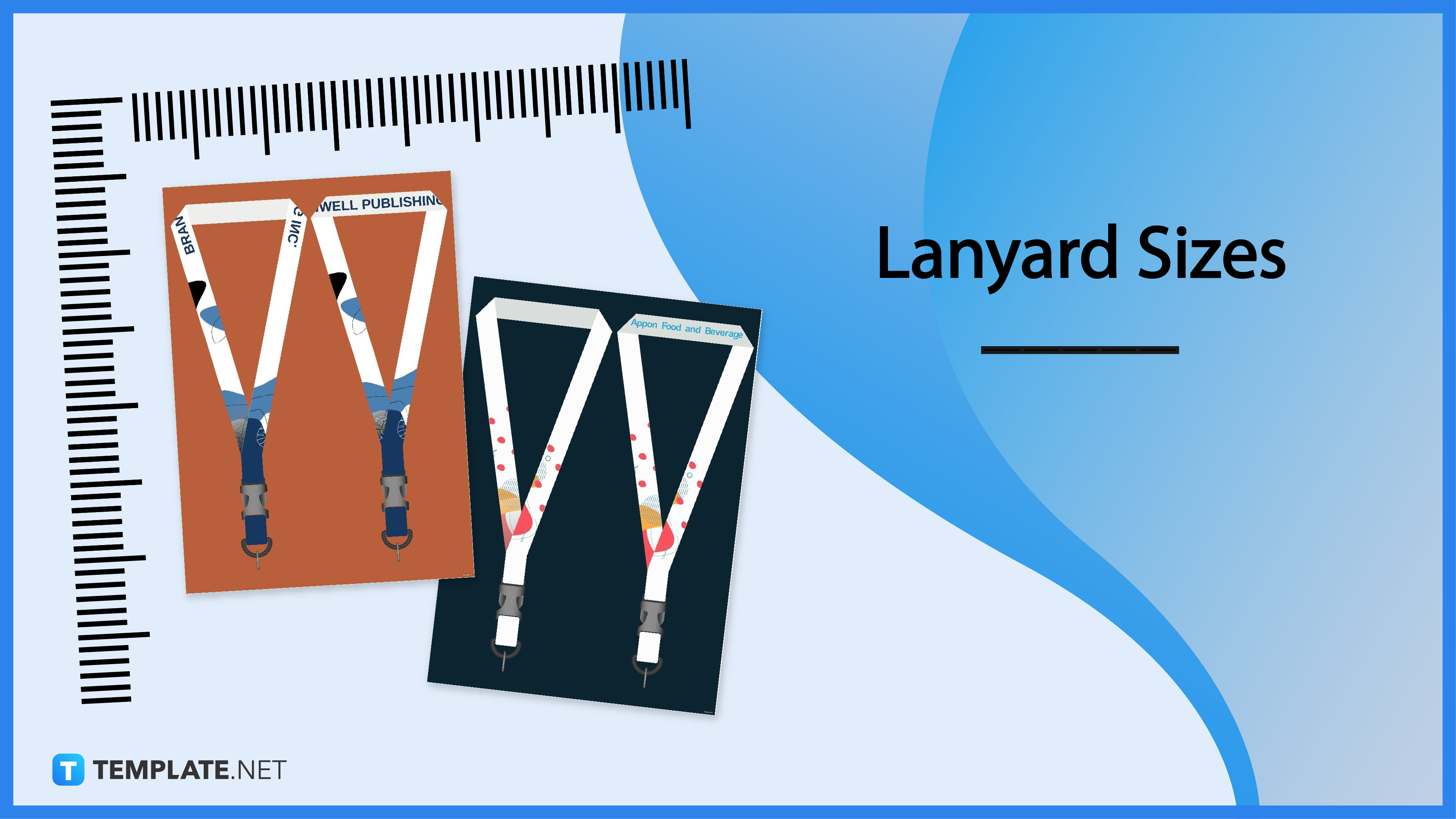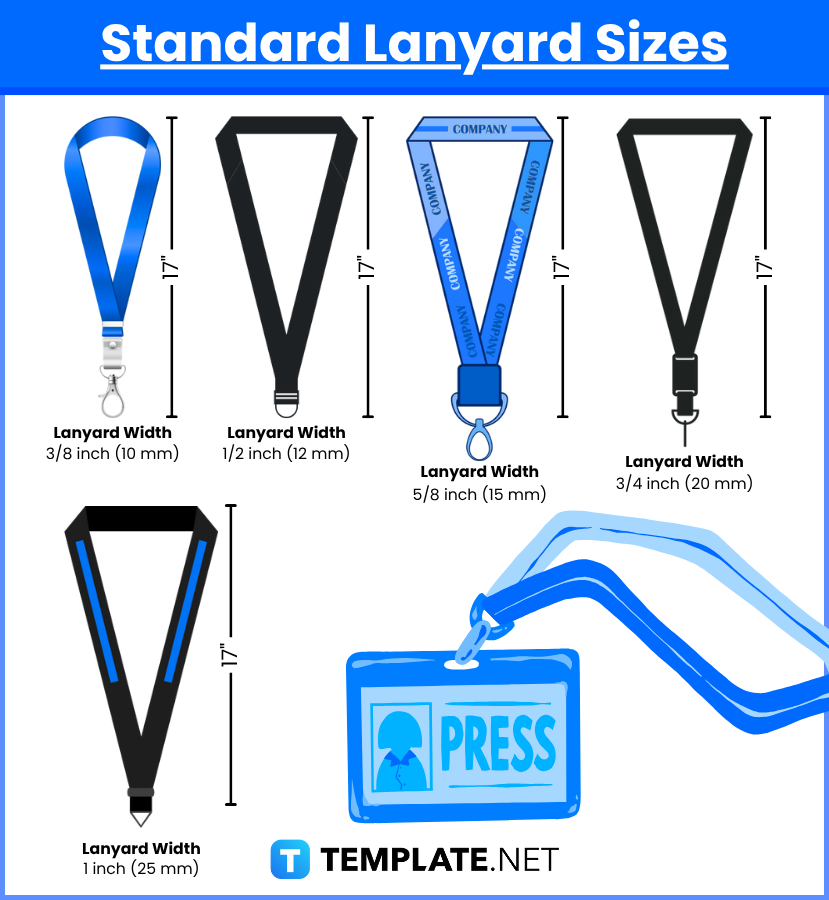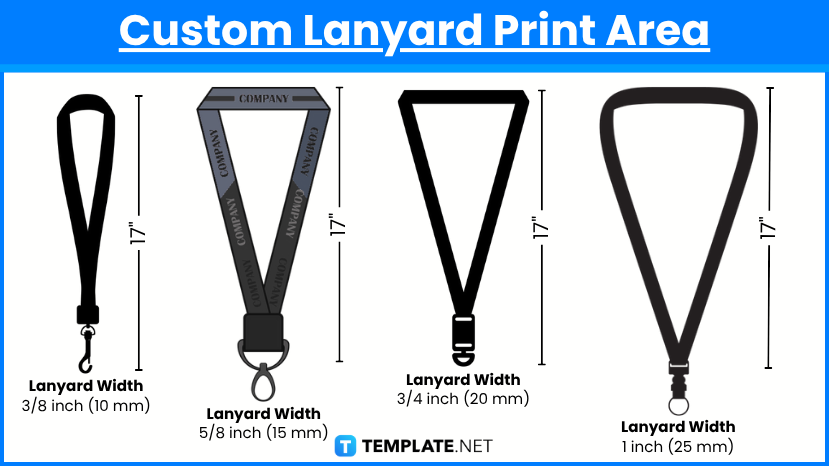![How To Make/Create an Invitation in Google Docs [Templates + Examples]](https://images.template.net/wp-content/uploads/2023/07/How-To-Make_Create-an-Invitation-in-Google-Docs-Templates-Examples-788x443.png)
How To Make/Create an Invitation in Google Docs [Templates + Examples]
To formally invite someone or a group of people to an event or activity, you will need to send out…
Sep 02, 2025
The lanyard size is critical, especially if we are talking about the ones used as a safety belt or harness, but at other times it also allows freedom for creativity such as the ones used for carrying identification cards and name tags. When designing your own lanyards, make sure to choose the right size that complements the ID or name tag’s design.

Lanyard sizes matter more than you think—whether for events, office use, or promotional giveaways. The right lanyard length and width ensure comfort, visibility, and practicality for holding ID badges, keys, or USB drives. In this quick guide, we’ll explore standard lanyard sizes, helping you choose the best fit for your needs. Ideal for businesses, schools, and event organizers looking to make a lasting impression with stylish, functional lanyards.


| Lanyard Width | Length (Per Side) | Total Circumference | Best Use |
|---|---|---|---|
| 3/8 inch (10 mm) | 17″–18″ | 34″–36″ | Lightweight ID badges, basic office use |
| 1/2 inch (12 mm) | 17″–18″ | 34″–36″ | Trade shows, schools, small logos |
| 5/8 inch (15 mm) | 17″–18″ | 34″–36″ | Standard for most events and businesses |
| 3/4 inch (20 mm) | 17″–18″ | 34″–36″ | Bigger logos, branding visibility |
| 1 inch (25 mm) | 17″–18″ | 34″–36″ | VIP events, heavy badge holders, full-color logos |
The smallest size option for a lanyard is 10 millimeters wide and 450 millimeters long, or 1 × 45 cm, and is usually used to clip an attachment like an office ID card, a card pouch, or a plain name tag encased with plastic. Because it is thinner than the other lanyard sizes, only light materials are suggested to attach it with. Despite that, it still provides its main purpose: to display information for security and recognition.
Another size option you can work with is the 15 × 450 millimeters lanyard. This is only a few millimeters wider than the previous size but is commonly used as kids’ name tag holders since it isn’t too wide and too slim for their necks. Most lanyards in this size are printed with an adorable design and are decorated with colorful beads, tied with a ribbon, or sprinkled with glitter to make them more attractive to children.
A 20 × 450 mm lanyard is commonly worn among office workers with customized designs that their company gives out when hired. A lanyard this wide is sufficient to display creativity in terms of design. Also, the width is enough to place texts like a company motto or an organization’s mission.
Some gamers prefer to wear lanyards with a 25 × 450 mm dimension because it seems that a wider strap feels more tolerable hanging around the neck than a slimmer strap. Moreover, as an artist, a wider canvas is much better to work with than a narrow one – you can have more space for creativity to take over. In terms of the printing process, this size is easier to handle and produce, however, it takes up more ink than a smaller size.

| Lanyard Width | Printable Area (Length) | Common Imprint Method |
|---|---|---|
| 3/8 inch | ~12″–14″ per side | Silkscreen, heat transfer |
| 5/8 inch | ~14″–16″ per side | Silkscreen, sublimation |
| 3/4 inch | ~16″–18″ per side | Full-color dye sublimation |
| 1 inch | ~18″–20″ per side | Full-color, screen print |
When working on a digital copy of a lanyard, it is always better to consider the material of the lace or strap the design will be printed. One more thing to consider is the process in which the design will be produced like sublimation, for example, wherein the ink used to print the design is evaporated first which results in a waterproof output. Nonetheless, the usual size used for making digital lanyards, in terms of width, is either 15 mm or 20 mm.
The lanyard size for print is 36 inches long and 3/8 or 5/8 inches wide. Similar to digital copies, it is also important to consider the material that will be used for printed copies. Today, most lanyards are made up of synthetic materials such as nylon, polyester, and recycled PPE that is durable yet tolerable to the skin.
Most businesses prefer a large lanyard for their employees’ ID cards and this could be influenced by the common saying “the bigger, the better.” A 3/4-inch or a 1-inch width is the better option, especially if the goal is to make the business logo or name visible and readable by the naked eye. Because a lanyard in this size has a wider space, you’re able to fit more text like the company address or website.
One of the most popular photo editing applications or software is Adobe Photoshop. With Photoshop, you can edit different types of image formats, work with professional filters, textures, or plug-ins, and now you can edit video clips and animation layers. When designing an ID lace using this application, set your editing page to 3456 × 96 pixels with a 300 resolution for better results.
Adobe Illustrator is another software or application used to edit intricate details or designs for 2D and 3D artworks. Although their functions are similar, Photoshop and Illustrator differ from each other in terms of the graphics used: the former uses pixels while the latter uses vectors. On the other hand, the dimension used for creating a lanyard design using Illustrator is 1000 × 600 mm.
The standard size for a lanyard is 15 millimeters wide and 450 millimeters long.
The usual thickness of a lanyard ranges from 0.03 centimeters to 0.76 centimeters.
A lanyard hole should be at least 0.75 mm.
Lanyards for children should be twelve to fifteen inches in diameter.
The standard length of a lanyard is 450 mm.
The usual horizontal lanyard holders measure 3.5 inches in width and 2.25 in height while vertical lanyard holders are four inches high and three inches wide.
Body harness lanyards measure over six feet long from the anchor to the body belt attachment.
For lanyards that hang around the neck, the common width measurements are 10, 15, 20, and 25 millimeters.
To measure a lanyard, you can either measure from end to end or wrap a rope or a measuring tape around your neck then bring the ends together to your preferred length without including the badge.
The diameter of standard lanyards should never be below ten millimeters.
Two of the best and most user-friendly programs or applications used for creating a lanyard design are Adobe Photoshop and Illustrator.
To create vertical text in Adobe Photoshop, select the text layer and after the text tool in the toolbar, then click the text orientation button in the upper left.
![How To Make/Create an Invitation in Google Docs [Templates + Examples]](https://images.template.net/wp-content/uploads/2023/07/How-To-Make_Create-an-Invitation-in-Google-Docs-Templates-Examples-788x443.png)
To formally invite someone or a group of people to an event or activity, you will need to send out…
![How To Create an ID Card in Google Docs [Template + Example]](https://images.template.net/wp-content/uploads/2023/07/How-To-Create-an-ID-Card-in-Google-Docs-Template-Example-788x443.png)
ID cards are used as a way to represent an individual to the company or organization they work or volunteer…
![How to Make an ID Card in Microsoft Word [Template + Example]](https://images.template.net/wp-content/uploads/2023/07/How-to-Make-an-ID-Card-in-Microsoft-Word-Template-Example-788x443.png)
ID cards are an essential part of any employee working for a company or an organization to be recognized as…
![How To Make/Create a Book Cover in Google Docs [Templates + Examples]](https://images.template.net/wp-content/uploads/2023/07/How-To-Create-a-Book-Cover-in-Google-Docs-788x443.png)
Aside from protecting a book, book covers are specifically designed to attract readers and convey the essence of the book.…
![How To Make/Create a Book Cover in Microsoft Word [Templates + Examples]](https://images.template.net/wp-content/uploads/2023/07/How-To-Create-a-Book-Cover-in-Microsoft-Word-788x443.png)
A book cover is the outer layer of a book that is used to protect its contents. Book covers are…

Job vacancy is a common scenario in companies and organizations. Employees leave for all kinds of reasons and when they…

Save the date sizes are usually the same size as a formal invitation. But there are a number of different…

Script is a popular word that is frequently used in the entertainment world. There are a variety of areas and usages…

Presentations may not look as pleasant as how you design them with pictures, animations, videos, and other graphic designs without…